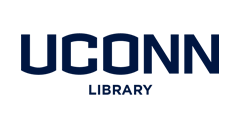Date of Completion
Fall 12-6-2024
Thesis Advisor(s)
Dr. Sharon Smith; Dr. Elizabeth Kline
Honors Major
Molecular and Cell Biology
Abstract
An individual’s perception of their oral cavity directly correlates with whether he/she will seek oral health care. Self-reported oral health (SROH) rating is typically measured on a scale of excellent to poor and is a validated measure of an individual’s oral health. This study aimed to (1) examine the correlation between SROH and access to oral health care, (2) assess changes in access and SROH from 2011 to 2020, and (3) analyze variations across age, gender, and race. Data was collected from the 2011-12, 2013-14, 2015-16, and 2017-20 National Health and Nutrition Examination Survey for individuals 20 or older. Two questions for the Oral Health Questionnaire were used: (1) rate the health of teeth and gums and (2) whether oral health care was available in the past 12 months when needed. Demographic data was collected. Data was uploaded to RStudio and analyzed for statistical significance. A significant correlation between SROH and access to care was found. No significant differences in mean SROH were observed across survey cycles (p = 0.27), and access to care did not significantly change over time (p = 0.1296). SROH varied by age, with individuals aged 30-64 reporting lower SROH and those 65+ more likely to report care access. Males reported lower SROH but higher access than females. Asian and White individuals reported higher SROH and access compared to other racial/ethnic groups. Future research should include the 2021-22 data to explore pandemic-related impacts on oral health perceptions and access and underlying factors affecting access.
Recommended Citation
Lordo, Taylor, "Self-Reported Access to Oral Health Care and Perception of Oral Health from 2011-2020" (2024). Honors Scholar Theses. 1108.
https://digitalcommons.lib.uconn.edu/srhonors_theses/1108

